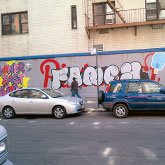The Fancy Harnesses Social Commerce
With social commerce gaining in popularity, The Fancy has quickly become a popular online destination for browsing and shopping.
Featuring a streamlined design and simple aesthetic, it’s a social-media shopping site where users can browse everything from images of exotic beaches and lush grottoes to the latest offerings from Alexander Wang or Stella McCartney.
Similar to Pinterest, the online pinboard where users can “pin” their favorite items and share them with friends, users can sign in with their Facebook, Twitter or email and “fancy” items, as well as purchase them directly from the Fancy site or mobile app.
Brands ranging from Gucci, YSL, Alexander McQueen and Puma to Crate and Barrel and Restoration Hardware are touting their wares on the fashion and lifestyle site, which features apparel, travel and home goods. Even French mega-retailer Colette has joined.
“Our idea is really simple; it’s the same idea as Amazon,” said Joseph Einhorn, founder and chief executive officer of The Fancy. “We looked at commerce and said it’s great that you can have an easy, busy shopping experience with Amazon, but it’s not really modern. Wewanted to do it in a modern, social way—finding out about cool stuff from people whose taste you really admire.”
The site is more of a shopping utility and less of a bulletin board, he explained. It harnesses the idea of social commerce.
“That’s really key—our consumers and people on the Web at large are looking for a holistic all-in-one experience, which is different from finding stuff by searching.”
When users follow someone on The Fancy, they see everything the user fancies, whether the user added it themselves or fancied it from someone else.
Launched in 2011, the site has more than 650,000 registered users and boasts Kanye West, Ashton Kutcher, Salma Hayek, Pharrell Williams, P. Diddy and Bar Refaeli as some of its followers.
“It’s shopping for people whose tastes you admire,” Einhorn said.
Merchants also play an active role on the site. Consumers fancy items, and then brands and retailers make offers on those items, even zeroing in on products that have attracted a following and creating deals for consumers—a demand-driven commerce model.
Another twist is if a user finds something they like somewhere else on the Web, they can fancy it, even if they don’t know where to buy the item. Once an item has been fancied, if a brand has it (or a similar item), they can make the user an offer.
Backed by fashion and tech industry heavyweights such as Francois Henri Pinault, CEO of luxury retail goods company PPR, and Facebook co-founder Chris Hughes, the New York–based startup has raised
$18 million in funding and has more than 650 brand partnerships. Its 650,000 users fancy more than 2 million items each week, according to the company.—Deidre Crawford



























